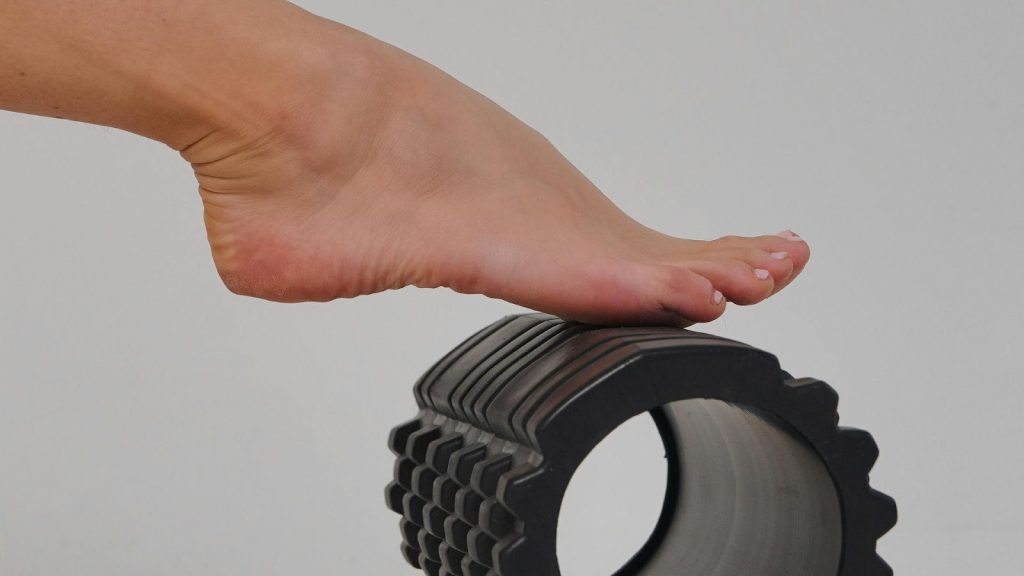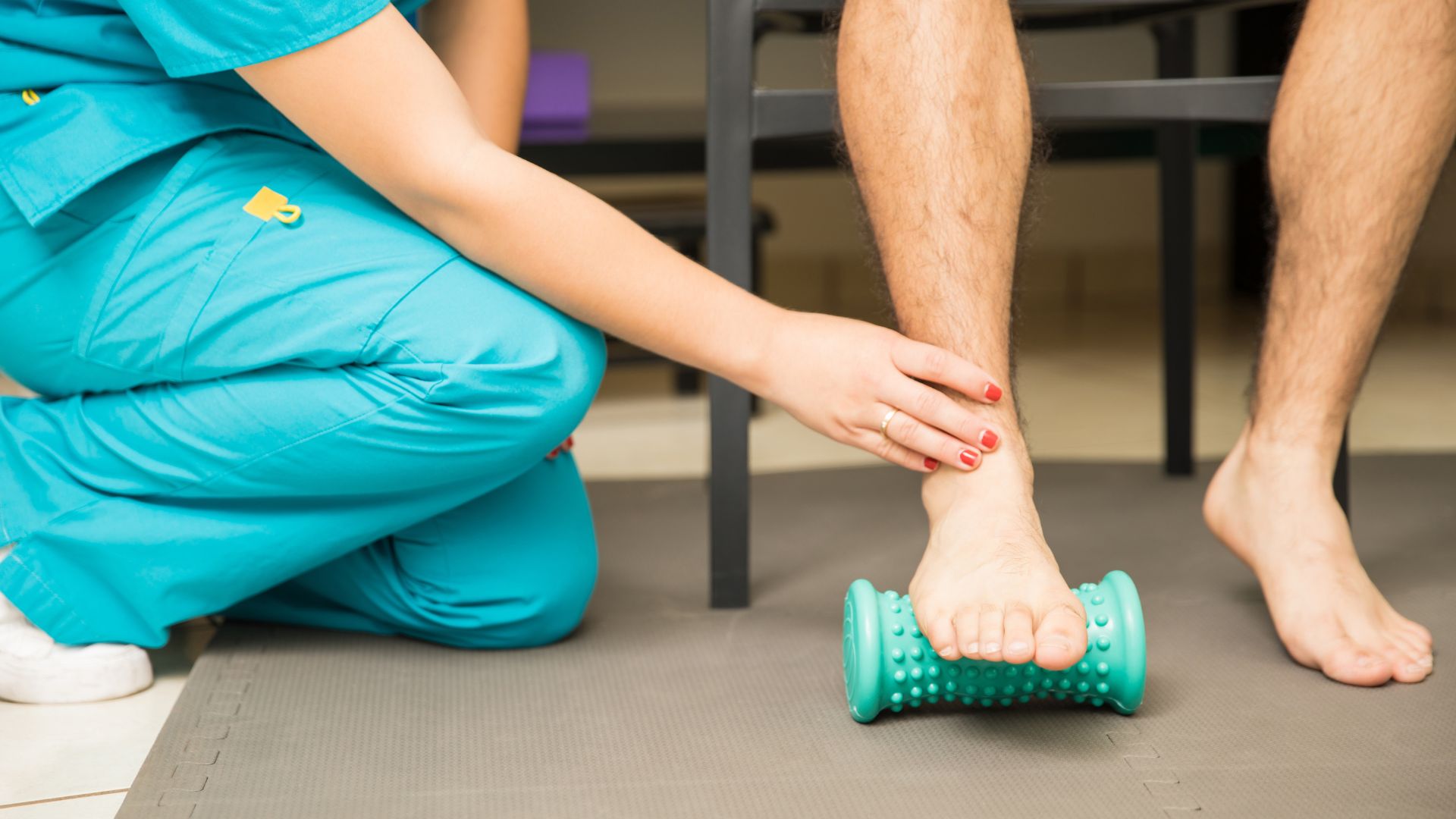Should You Use a Foam Roller for Plantar Fasciitis?
Foam rolling is a popular choice for many looking to ease their plantar fasciitis. Using a foam roller can help release tension in the fascia and provide foot pain relief. It can be a simple and cost-effective part of your treatment plan.
When you roll your foot on a foam roller, it may help soothe heel pain. The pressure and movement may improve blood flow and alleviate some discomfort. Choosing the proper techniques is essential for getting the best results from foam rolling.
While foam rolling can help, you might want to explore other treatments as well. Chiropractic care and acupuncture are options that some people find helpful. It’s important to consider all possible treatments for the best relief from foot pain.
Struggling with plantar fasciitis? Foam rolling can help, but a tailored treatment plan might be exactly what you need to find lasting relief. At Coquitlam Wellness Center, our expert physiotherapists are here to guide you through effective strategies for managing and healing plantar fasciitis. Book your consultation today and start your journey to pain-free movement!

Causes and Symptoms of Plantar Fasciitis
Plantar fasciitis is mainly caused by strain on the plantar fascia ligament in your foot. This can happen if you spend a lot of time on your feet or wear shoes that do not provide good support. Increased physical activity can also lead to this problem.
People who are overweight may experience plantar fasciitis more often. This is because extra weight puts more pressure on the feet. Sometimes, having tight calf muscles can make it harder for your foot to move properly, leading to strain.
You may notice pain in your heel or along the arch of your foot. This pain is usually worse when you take your first steps in the morning. You might also feel discomfort after standing for long periods.
In some cases, the pain can decrease after you move around a bit. Swelling in the heel area or along the bottom of the foot can sometimes occur. Symptoms might vary from person to person.
To manage these symptoms, stretching your foot and calf muscles can be beneficial. Wearing supportive shoes and using orthotic inserts might also improve your condition. Keeping track of your activities can help you understand what might make your symptoms worse.
Foam Rolling for Plantar Fasciitis
Foam rolling may help alleviate foot pain by releasing tight fascia. It’s essential to understand how this method works and its effectiveness in treating plantar fasciitis.
How Foam Rolling Works
Foam rolling aims to release tension in the fascia, a connective tissue in the body. By applying pressure with a foam roller, you can help reduce knots and tightness in the foot.
Tension in fascia can cause discomfort, especially in the heel area. This method helps improve blood flow, promoting healing and reducing inflammation that occurs in plantar fasciitis.
The process often includes slow, controlled movements with the roller. It’s a simple and accessible option for many seeking relief.
Techniques and Exercises for Fascia Release
To use a foam roller effectively, start by sitting on the floor with your leg extended. Place the foam roller under your foot.
Gently roll back and forth, pressing against the sole. Focus on tender areas where tension or pain is felt.
Should you feel pain: Adjust the pressure or skip that spot to prevent further discomfort. Sessions of 5-10 minutes, a few times per week, are often recommended.
Tip: Try different angles to target various parts of the foot, like the arch or heel.
Effectiveness of Foam Rolling in Treatment
Foam rolling may aid in reducing heel pain and improving mobility for those with plantar fasciitis. Although it is not a cure, it can lessen symptoms and improve comfort.
Some people find relief with consistent use, as the technique may reduce tightness and increase flexibility. However, individual results may vary.
While it can be part of a broader treatment plan, you might need to combine it with other therapies, such as stretching or physical therapy, for more comprehensive relief. Remember, consulting a healthcare provider is always a good step before starting any new treatment.

Comparing Treatment Methods
When tackling plantar fasciitis, you have several options. These include conventional treatments, alternative methods like chiropractic and acupuncture, and lifestyle changes that can prevent pain.
Conventional Treatments for Foot Pain Relief
For foot pain relief, you might start with conventional treatments. Rest, ice, and over-the-counter pain relievers are common first steps. Doctors often recommend stretching exercises to improve flexibility. Physical therapy is another option and may include massage and strengthening exercises.
Sometimes, orthotics are used to provide more support. These are custom shoe inserts that can help with alignment and take pressure off your heel. In more serious cases, your doctor may suggest corticosteroid injections or even surgery.
Alternative Approaches: Chiropractic and Acupuncture
Alternative treatments such as chiropractic and acupuncture are also considered by many for managing heel pain. Chiropractors focus on aligning your spine, which can impact your feet and provide relief. Adjustments may help reduce tension throughout your body, including the fascia surrounding your heel.
Acupuncture involves inserting thin needles to stimulate specific points on your body. It’s believed to enhance blood flow and reduce inflammation, potentially easing plantar fasciitis symptoms. Many people find acupuncture relaxing and experience pain relief after sessions.
Lifestyle Adjustments and Prevention
Making changes to your daily habits can also aid in treatment. Weight management, proper footwear, and regular exercise play a crucial role. Losing weight reduces stress on your feet, while supportive shoes offer better cushioning.
Incorporate foot-strengthening exercises into your routine. These can include toe stretches, calf raises, and using a towel to work the arches. Pay attention to activities that put excessive stress on your feet and adjust as needed to prevent worsening your condition.
Conclusion
Using a foam roller can help reduce some symptoms of plantar fasciitis. It works by easing tension in the fascia, which may lead to foot pain relief. You might find this easy method helpful.
Other treatments like chiropractic care and acupuncture are worth considering. These can address heel pain in different ways. You may need to explore options to see what works best for you.
It’s important to try different methods for effective results. Simple routines, combined with other treatments, can make a difference in managing your symptoms.If you’re in Coquitlam, BC, visit us at Coquitlam Wellness Center for personalized care and guidance tailored to your needs.




